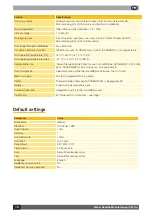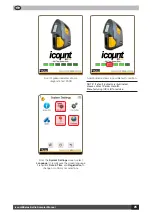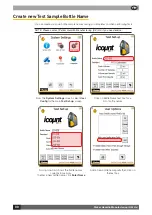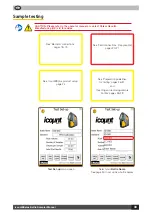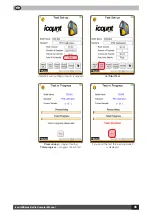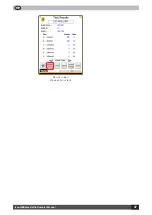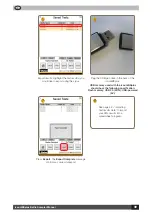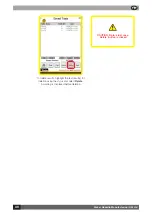
Parker Hannifin Manufacturing (UK) Ltd
26
USA
Preparation guidelines for testing
The icountBSplus has been designed to reduce to a minimum effects that can make condition
monitoring inaccurate or unreliable by eliminating many of the variables associated with
contamination monitoring.
Variation caused by different amounts of entrapped gas is suppressed by pressurising the sample
with cleaned air. The analysis tube is supplied with an accurate amount of oil, through a fixed
displacement pumping system, and the test method is closely controlled, removing other variables
which could occur with bottle sampling.
Unfortunately, there are other factors that are beyond the ability of the measuring device to control.
These external factors, if carefully considered, can be controlled within strict limits so that sampling
errors are minimized. These are categorized as:
■
■
The effect of system conditions
■
■
Fluid sample extraction
■
■
Sample handling and preparation.
In most instances, the adoption of simple controlled procedures will result in reliable trend monitoring.
The effect of system conditions
SYSTEM FLOW RATE
Samples are best taken from a point in the system where the flow is turbulent (i.e. with a Reynolds
Number greater than 4000). The turbulent flow creates a mixing action. Where the flow is
streamlined or laminar, larger particulate may tend to settle toward the lower pipe surface and not
be sampled.
SYSTEM CONDITION CHANGES
Changes in the system operating condition, flow, temperature, pressure or vibration can result in
previously sedimented contaminant being retained into the flowing oil. It is also possible that these
changes may cause partially contaminated filter elements to shed particulates into the system.
Samples should therefore be extracted when the system is in a steady state condition: the result is
less likely to be distorted by contaminant peaks.
TAKING A SAMPLE
Extract a sample while the system is operating under consistently controlled conditions. Adopt a
consistent technique.
Spill off at least 200ml of fluid to flush the sampling port of residual contaminant.
Leave the bottle capped until you are ready to extract the sample.
Fill the bottle to approximately 80% and cap immediately after extracting the sample.
Fluid sample extraction
FLOW RATE
Variations in the sampling flow rate may affect the result from bottle samples. The flow rate through
a sampling port from an operating hydraulic system will vary according to the system pressure, the
port restriction and fluid viscosity. For accurate trend monitoring, it is necessary to maintain these
conditions consistently when extracting Bottle Samples.
SAMPLING VALVES
There are a number of proprietary sampling valves available, which adhere to good theoretical
principles. However, their high cost and precision is probably unnecessary for trend monitoring.
SAMPLING POINTS
Sampling points should enable extraction of a sample without changing the system’s condition. Fine
control needle valves are not desirable, as they have a tendency to silt up under some operating
conditions, causing the distribution of contaminants in the fluid to be changed. The sampling port
should however be protected to maintain cleanliness and thoroughly flushed before collecting the
sample for analysis.
Summary of Contents for icountBSplus
Page 7: ...icountBSplus Bottle Sampler Manual 7 USA EC declaration of conformity...
Page 37: ...icountBSplus Bottle Sampler Manual 37 USA bp Results screen Browse all your tests...
Page 53: ...icountBSplus Bottle Sampler Manual 53 USA Y Y Y Y N N N N Diptube does not stay down...
Page 54: ...Parker Hannifin Manufacturing UK Ltd 54 USA Y Y Y Y N N N N Diptube stays down...
Page 55: ...icountBSplus Bottle Sampler Manual 55 USA Y N Y N Diptube operation not smooth Diptube stuck...
Page 58: ...Parker Hannifin Manufacturing UK Ltd 58 USA icountBSplus gives suspect counts Y Y Y Y N N N N...
Page 60: ...Parker Hannifin Manufacturing UK Ltd 60 USA Y Y N N Touchscreen failure...



